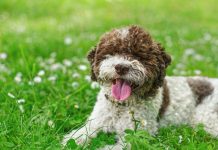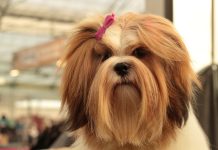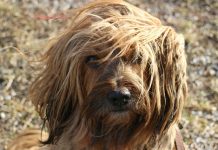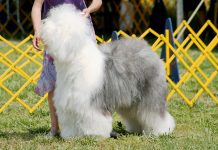History and Origins of the Australian Shepherd Breed

The Australian Shepherd, often simply called the “Aussie,” is a herding breed that originated in the United States rather than Australia. Despite its name, the breed’s development can be traced back to Basque shepherds who immigrated to the United States from Australia in the 1800s. Here’s a brief overview of the history and origins of the Australian Shepherd:
- Basque Origins: The ancestors of the Australian Shepherd are believed to be the Basque shepherd dogs that accompanied Basque shepherds from Europe to Australia and later to the western United States in the 1800s. These dogs were highly skilled at herding livestock and became known for their intelligence and work ethic.
- Ranching in America: Upon arriving in the western United States, Basque shepherds continued their sheep-herding practices, and their dogs became highly valued for their ability to manage livestock in the rugged terrain of the American West.
- Development of the Breed: Over time, these Basque shepherd dogs were crossed with various other herding breeds, including Collies and Border Collies, to create the modern Australian Shepherd. The breed’s intelligence, agility, and adaptability made it well-suited for herding cattle and sheep on American ranches.
- Recognition and Popularity: The Australian Shepherd gained popularity throughout the 20th century, particularly among ranchers and stockmen. The breed’s versatile skills, striking appearance, and loyal temperament contributed to its widespread recognition.
- Breed Standard and Recognition: The Australian Shepherd was officially recognized by the American Kennel Club (AKC) in 1993. Today, the breed is known for its capabilities in various dog sports, including agility, obedience, herding trials, and flyball.
Physical Characteristics and Appearance of Australian Shepherds
The Australian Shepherd is a medium-sized, athletic, and agile dog known for its striking appearance and keen intelligence. Here are the key physical characteristics and appearance traits of Australian Shepherds:
- Size: Australian Shepherds are considered medium-sized dogs. Males typically stand between 20-23 inches (51-58 cm) at the shoulder, while females are slightly smaller, ranging from 18-21 inches (46-53 cm). Adult dogs generally weigh between 40-65 pounds (18-29 kg).
- Build: The breed has a well-balanced and sturdy build, with a slightly longer than tall body. Australian Shepherds are agile and athletic, capable of quick movements and endurance.
- Coat: The Australian Shepherd’s coat is medium-length and can be either straight or wavy. The texture is weather-resistant and may have a slight feathering on the legs and tail. The breed comes in various coat colors and patterns, including blue merle, red merle, black, and red, often with white and copper markings.
- Head: The head is proportionate to the body, with a slightly rounded skull and a moderately defined stop. The muzzle is of medium length and tapers slightly toward the nose.
- Eyes: One of the most distinctive features of the Australian Shepherd is its expressive and often striking eyes. The eyes can be brown, blue, amber, or a combination of colors (known as “marbled”), and may be flecked or marbled within the same eye.
- Ears: Australian Shepherds have medium-sized, triangular-shaped ears that are set high on the head. The ears may be carried erect or semi-erect, and they are often expressive and mobile.
- Tail: The breed’s tail is naturally bobbed or docked to a short length. Some Australian Shepherds are born with a naturally short or “bobbed” tail, while others may have a longer tail that is customarily docked for historical reasons.
- Gait: Australian Shepherds move with a smooth and effortless gait, reflecting their agility and athleticism. They are capable of quick turns and sudden bursts of speed, making them excellent herding dogs.
Overall, the Australian Shepherd is a versatile and intelligent breed that excels in various roles, from herding livestock to participating in dog sports and serving as loyal companions. Their striking appearance, coupled with their keen intelligence and energetic nature, makes them popular among active families and individuals who can provide them with the physical and mental stimulation they need to thrive. Proper training, socialization, and regular exercise are essential for ensuring the well-being and happiness of Australian Shepherds in domestic settings.
Australian Shepherd Temperament and Personality Traits
The Australian Shepherd, often referred to as an “Aussie,” is known for its intelligent, energetic, and loyal temperament. This breed is highly versatile and excels in various roles, including herding, agility, obedience, and as a devoted family companion. Here are the key temperament and personality traits of Australian Shepherds:
- Intelligent and Quick Learner:
- Australian Shepherds are exceptionally intelligent dogs with a strong desire to work and please their owners. They thrive on mental stimulation and enjoy learning new commands and tricks. Their intelligence makes them highly trainable in various activities and sports.
- Energetic and Active:
- Aussies are energetic and agile dogs that require regular exercise and physical activity to stay happy and healthy. They have high stamina and excel in activities such as running, hiking, fetch, and agility. Daily exercise is essential to prevent boredom and behavioral issues.
- Loyal and Protective:
- Australian Shepherds are devoted and loyal companions that form strong bonds with their families. They are known to be protective of their loved ones and may exhibit watchdog instincts by alerting to strangers or unusual activities.
- Friendly and Social:
- Despite their herding instincts, Australian Shepherds are generally friendly and sociable dogs. They enjoy the company of their family members and are typically good with children and other pets when properly socialized from an early age.
- Alert and Responsive:
- Aussies are highly alert and responsive dogs that are always tuned in to their surroundings. They have a keen sense of awareness and may excel in activities that require focus and attentiveness, such as obedience trials.
- Herding Instincts:
- Australian Shepherds have strong herding instincts and may exhibit behaviors such as nipping or circling, especially with children or other pets. Early training and socialization can help channel these instincts appropriately.
- Versatile and Adaptable:
- Aussies are adaptable dogs that can thrive in various environments, from rural settings to urban homes, as long as their physical and mental needs are met. They enjoy having a job to do and excel in roles that challenge their abilities.
- Playful and Eager to Please:
- Australian Shepherds have a playful and enthusiastic nature that makes them enjoyable companions for active families. They thrive on interaction and playtime with their owners and may become bored or restless without sufficient engagement.
Training and Socialization Needs for Australian Shepherds
Australian Shepherds are highly trainable dogs that benefit from consistent training and early socialization. Proper training helps channel their intelligence and energy into positive behaviors. Here are important considerations for training and socializing Australian Shepherds:
- Positive Reinforcement:
- Use positive reinforcement techniques such as treats, praise, and play to motivate and reward desired behaviors. Aussies respond well to rewards and enjoy the challenge of learning new skills.
- Early Socialization:
- Start socializing your Australian Shepherd puppy early to expose them to different people, pets, and environments. This helps prevent shyness or fearfulness and promotes confident and well-rounded behavior.
- Basic Obedience Training:
- Focus on basic obedience commands such as sit, stay, come, and heel. Consistent training sessions with short, positive interactions are effective for teaching Aussies new commands.
- Channel Herding Instincts:
- Australian Shepherds have natural herding instincts that may need to be managed, especially in households with children or other pets. Redirect herding behaviors into appropriate activities and discourage nipping or chasing.
- Engage in Mental Stimulation:
- Provide mental stimulation through interactive toys, puzzle games, and training sessions. Aussies enjoy tasks that challenge their problem-solving skills and keep them mentally engaged.
- Regular Exercise:
- Ensure your Australian Shepherd gets plenty of daily exercise to expend energy and prevent boredom. Engage in activities such as walking, jogging, hiking, and playing fetch to meet their physical needs.
- Consistency and Patience:
- Australian Shepherds thrive on routine and consistency in training. Be patient and understanding, as this breed responds best to positive reinforcement and gentle guidance.
By investing time and effort into training and socialization, you can help your Australian Shepherd develop into a well-behaved, well-adjusted companion. Aussies thrive in active households where they can participate in various activities with their families. Their intelligence, loyalty, and playful nature make them wonderful companions for owners who can provide the mental and physical stimulation they need to thrive.
Health Considerations and Common Issues in Australian Shepherds
Australian Shepherds are generally healthy and hardy dogs, but like all breeds, they may be prone to certain genetic or health-related issues. Being aware of these potential concerns can help you provide the best care for your Australian Shepherd. Here are common health considerations and issues in Australian Shepherds:
- Hip Dysplasia:
- Hip dysplasia is a genetic condition where the hip joint doesn’t develop properly, leading to arthritis and lameness. Regular exercise, maintaining a healthy weight, and proper breeding practices can help reduce the risk of hip dysplasia.
- Elbow Dysplasia:
- Elbow dysplasia is a developmental abnormality of the elbow joint, causing pain, lameness, and arthritis. Avoid excessive jumping and provide joint supplements if recommended by your veterinarian.
- Progressive Retinal Atrophy (PRA):
- PRA is a group of genetic diseases that cause the degeneration of the retina, leading to vision loss and blindness. Regular eye exams by a veterinary ophthalmologist can help detect PRA early.
- Cataracts:
- Australian Shepherds may develop cataracts, a clouding of the eye’s lens that can impair vision. Surgical treatment may be necessary in severe cases.
- Collie Eye Anomaly (CEA):
- CEA is an inherited eye condition common in herding breeds, including Australian Shepherds. Regular eye screenings can help monitor and manage CEA.
- Epilepsy:
- Epilepsy is a neurological disorder characterized by recurrent seizures. While the exact cause is unknown, medication can help manage seizures in affected dogs.
- Autoimmune Disorders:
- Some Australian Shepherds may be prone to autoimmune disorders, such as autoimmune thyroiditis or autoimmune hemolytic anemia. Regular veterinary check-ups can help detect and manage these conditions.
- Allergies:
- Aussies may experience allergies, which can manifest as skin irritation, itching, or ear infections. Identifying and avoiding allergens can help manage allergy symptoms.
- Drug Sensitivity:
- Australian Shepherds may have a genetic predisposition to sensitivity to certain drugs, particularly those that affect the nervous system. It’s important to inform your veterinarian about any known drug sensitivities.
- Cancer:
- Some Australian Shepherds may be predisposed to certain types of cancer, including hemangiosarcoma, lymphoma, and mast cell tumors. Early detection and treatment are crucial for managing cancer.
Living with an Australian Shepherd: Suitable Environments and Lifestyle Considerations

Australian Shepherds are active, intelligent, and high-energy dogs that thrive in environments where they can receive plenty of mental and physical stimulation. Consider the following lifestyle considerations when living with an Australian Shepherd:
- Active Lifestyle:
- Aussies require regular exercise and mental stimulation to prevent boredom and behavioral issues. Aim for at least 1-2 hours of physical activity daily, including walks, runs, playtime, and interactive games.
- Training and Enrichment:
- Provide ongoing training and mental enrichment activities to keep your Australian Shepherd engaged and fulfilled. They excel in obedience training, agility, herding trials, and other dog sports.
- Socialization:
- Socialize your Australian Shepherd from a young age to ensure they are well-adjusted and confident around people, pets, and new environments. Expose them to various experiences and settings to prevent anxiety or fearfulness.
- Secure Environment:
- Australian Shepherds are intelligent and may have a tendency to roam or explore if left unsupervised. Ensure your yard is securely fenced to prevent escape, and supervise outdoor activities.
- Interactive Play and Toys:
- Provide stimulating toys and games that challenge your Australian Shepherd’s problem-solving skills and instincts. Puzzle toys, fetch, and interactive games can help satisfy their mental and physical needs.
- Routine Veterinary Care:
- Schedule regular veterinary check-ups, vaccinations, and preventive care to monitor your Australian Shepherd’s health and detect any potential issues early.
- Family Interaction:
- Australian Shepherds thrive on companionship and enjoy being part of the family. They are loyal and affectionate dogs that bond closely with their owners.
- Dedicated Training Time:
- Set aside dedicated time for training and bonding with your Australian Shepherd. Consistent training sessions strengthen the bond between you and provide mental stimulation for your dog.
By providing a stimulating and enriching environment, along with proper care and attention to their health needs, Australian Shepherds can thrive as active and happy companions. They are best suited for families or individuals who can meet their exercise and training requirements and who appreciate their intelligence and energetic nature. Always consult with your veterinarian for personalized advice and care recommendations based on your Australian Shepherd’s individual needs and health considerations.
Australian Shepherd Variations and Breeding Practices
Australian Shepherds, also known as Aussies, are a versatile and popular breed known for their intelligence, agility, and herding instincts. While the breed standard for Australian Shepherds describes specific characteristics and traits, variations in appearance and temperament can occur based on breeding practices and genetic factors. Here’s an overview of Australian Shepherd variations and responsible breeding practices:
Australian Shepherd Variations:
- Coat Color and Patterns:
- Australian Shepherds come in a variety of coat colors, including black, blue merle, red, and red merle. They may have white markings on the face, chest, legs, and tail. Merle patterns are characterized by patches or speckling of darker color on a lighter base coat.
- Coat Length and Texture:
- Aussies have a medium-length double coat that can be straight or slightly wavy. Some individuals may have a longer or shorter coat, which can influence grooming needs and shedding.
- Size:
- Australian Shepherds are considered medium-sized dogs, but variations in size can occur based on genetics and breeding. There are different lines within the breed, including working lines (often more agile and athletic) and show lines (bred for conformation and appearance).
- Tail Length:
- The breed standard for Australian Shepherds includes the option of a naturally bobbed tail, meaning a very short or naturally docked tail. Some Aussies are born with a naturally bobbed tail due to a genetic mutation, while others may have a longer tail that is customarily docked.
- Temperament and Working Ability:
- Variations in temperament can occur based on breeding practices and lineage. Some Australian Shepherds are bred for herding and working ability, while others are bred for conformation shows or companionship. Working lines may exhibit higher energy levels and stronger herding instincts.
Responsible Breeding Practices for Australian Shepherds:
- Health Testing:
- Responsible breeders prioritize the health and well-being of Australian Shepherds by conducting health screenings for genetic conditions prevalent in the breed. This may include testing for hip dysplasia, elbow dysplasia, progressive retinal atrophy (PRA), and Collie eye anomaly (CEA).
- Temperament and Behavior:
- Ethical breeders select breeding pairs based on temperament, working ability, and breed standard. They aim to produce puppies with stable, confident, and friendly personalities suitable for various roles, including companionship, sports, and working.
- Genetic Diversity:
- Maintaining genetic diversity is essential to prevent the spread of inherited health issues within the breed. Responsible breeders carefully select breeding pairs to minimize the risk of passing on genetic disorders and promote overall breed health.
- Conformation to Breed Standard:
- Breeders adhere to the breed standard set by kennel clubs and breed organizations, which outlines specific characteristics and traits for Australian Shepherds. This includes size, coat color, structure, and overall appearance.
- Ethical Standards:
- Reputable breeders follow ethical breeding practices, including proper care of breeding dogs, transparency about health testing and lineage, and providing support to puppy buyers. They prioritize the welfare of the dogs and advocate for responsible ownership.
- Breeding Goals:
- The primary goal of responsible breeding is to preserve and improve the breed, maintaining the unique qualities and characteristics of Australian Shepherds while promoting overall health, temperament, and working ability.
By following responsible breeding practices and prioritizing health, temperament, and breed integrity, dedicated Australian Shepherd breeders contribute to the preservation and improvement of this beloved breed. When acquiring an Australian Shepherd puppy, it’s important to research and choose a reputable breeder who adheres to ethical standards and prioritizes the well-being of the dogs. This ensures that you’ll welcome a healthy and well-adjusted Australian Shepherd into your family, ready to become a cherished companion and versatile partner.
50 Best Names with Meanings for Australian Shepherds
Naming your Australian Shepherd is an exciting part of welcoming them into your family. Here’s a list of 50 great names with meanings that might suit your Aussie:
Male Names:
- Rusty – Refers to the red or copper coat color.
- Bandit – Represents a mischievous and playful nature.
- Finn – Means “fair” or “white.”
- Arrow – Symbolizes speed and agility.
- Scout – Reflects the breed’s herding and scouting instincts.
- Ace – Represents excellence or top performance.
- Blaze – Refers to a streak of color, fitting for a colorful Aussie.
- Cody – Means “helpful” or “cushion.”
- Jet – Represents speed and sleekness.
- Duke – Means “leader” or “noble.”
- Buddy – Reflects the loyal and friendly nature of Aussies.
- Ranger – Represents an adventurous and outdoorsy spirit.
- Ollie – Short for Oliver, meaning “peaceful.”
- Huckleberry – Inspired by the adventurous character Huckleberry Finn.
- Chase – Reflects the breed’s herding and chasing instincts.
- Dash – Represents speed and agility.
- Rio – Refers to a river or stream, symbolizing flow and movement.
- Gizmo – Represents a clever and innovative nature.
- Jasper – Inspired by the gemstone, symbolizing protection and healing.
- Brody – Means “ditch” or “muddy place.”
Female Names:
- Willow – Refers to the graceful and flexible tree.
- Luna – Means “moon,” symbolizing beauty and mystery.
- Sasha – Means “defender of mankind.”
- Zoe – Means “life.”
- Scout – Reflects the adventurous and scouting nature of Aussies.
- Harper – Means “harp player,” symbolizing creativity.
- Winnie – Short for Winifred, meaning “blessed peacemaking.”
- Mia – Means “mine” or “bitter,” but reflects a sweet nature.
- Rosie – Represents a sweet and affectionate personality.
- Stella – Means “star,” symbolizing brightness and uniqueness.
- Piper – Refers to a pipe player, symbolizing creativity and charm.
- Lola – Means “sorrow” or “lady of sorrows.”
- Daisy – Symbolizes purity and innocence.
- Ruby – Inspired by the gemstone, symbolizing passion and vitality.
- Gypsy – Represents a free-spirited and adventurous nature.
- Coco – Refers to cocoa or coconut, representing sweetness.
- Willow – Symbolizes flexibility and adaptability.
- Misty – Reflects a mysterious and enchanting personality.
- Harley – Means “hare’s meadow,” symbolizing playfulness.
- Skye – Refers to the sky, symbolizing freedom and expansiveness.
Gender-neutral names:
- Charlie – Means “free man” or “strong.”
- Bailey – Means “bailiff” or “steward.”
- Oakley – Inspired by the oak tree, symbolizing strength.
- River – Represents flow and movement.
- Indie – Short for independent, symbolizing a free spirit.
- Sunny – Symbolizes brightness and happiness.
- Dash – Represents speed and agility.
- Echo – Means “reverberating sound.”
- Blaze – Refers to a streak of color, fitting for a colorful Aussie.
- Copper – Reflects the breed’s copper-colored coat.
Choose a name that resonates with your Australian Shepherd’s personality, appearance, or the qualities you admire. Whether you prefer a classic, meaningful, or unique name, the right name will be a perfect fit for your beloved Aussie companion.

In conclusion, this comprehensive guide to Australian Shepherd dogs has provided a detailed overview of this intelligent and versatile breed. Throughout our exploration, we’ve delved into the history, distinctive characteristics, and essential care considerations that define Australian Shepherds. Known for their intelligence, agility, and loyal nature, Australian Shepherds make exceptional companions for active individuals and families. They excel in various activities, including herding, agility, and obedience, showcasing their adaptability and work ethic. As you embark on your journey with an Australian Shepherd, may you appreciate their unique qualities and form a strong bond with this delightful breed, creating lasting companionship and joy together.



























